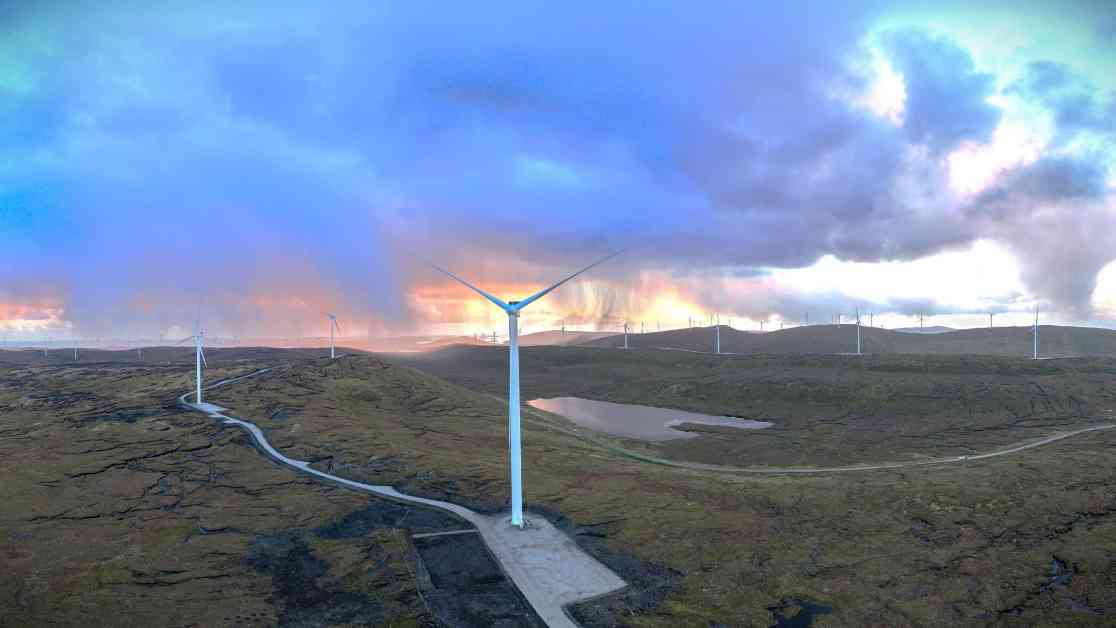The Shetland Islands, known for their picturesque landscapes and rugged beauty, have now become a powerhouse for renewable energy in the UK. With the completion of the Viking Wind Farm and a 160-mile long subsea link to mainland Scotland, these islands are now playing a crucial role in the country’s transition to a cleaner, greener energy system.
Shetland Windfarm Powers Half a Million Homes
Electricity has officially started flowing from the Shetland Isles to mainland Scotland as the UK’s most powerful wind farm, the Viking Wind Farm, begins operations. This groundbreaking project, spearheaded by energy giants SSE, marks a significant milestone in the UK’s renewable energy journey.
SSE Renewables has invested over £1 billion in the construction of the Viking Wind Farm, which boasts 103 turbines capable of producing enough electricity to power nearly 500,000 homes annually. The completion of this wind farm not only enhances the UK’s onshore and offshore generating capacity to over 30 gigawatts but also contributes significantly to reducing carbon emissions by more than 35 million tonnes per year.
The specialist cable-laying vessel NKT Victoria was instrumental in installing the 160-mile subsea cable that connects the Shetland Islands to the UK mainland. This subsea link, a marvel of engineering, ensures that the renewable energy generated on the islands can be efficiently transmitted to homes and businesses across the UK.
Unlocking the Green Energy Potential of Shetland
Scotland’s First Minister John Swinney lauded the completion of these projects as a crucial step in unlocking the green energy potential of the Shetland Islands. The Viking Wind Farm and the subsea cable transmission represent a significant investment in the region’s sustainable economic growth and align with the Scottish Government’s mission to achieve net-zero emissions.
Alistair Phillips-Davies, CEO of SSE, emphasized the importance of these projects in advancing the UK towards a clean energy system. He highlighted the role of Shetland and the North Sea in supporting the country’s energy security and emphasized their pivotal role in decarbonizing the power system.
The completion of the Viking Wind Farm and the subsea cable transmission signifies a monumental achievement after nearly two decades of planning and execution. With a renewed focus on clean power and a national mission for clean energy by 2030, energy industry leaders are committed to accelerating the development of mission-critical infrastructure to meet the country’s growing energy needs.
Building a Clean Energy Superpower
Energy Secretary Ed Miliband underscored the significance of projects like the Viking Wind Farm in making Britain a clean energy superpower. By switching on the largest onshore wind farm in the UK, hundreds of thousands of homes in the Shetlands and beyond will benefit from affordable, sustainable energy. This project not only creates jobs and stimulates growth in local communities but also reduces the country’s reliance on fossil fuels, enhancing energy independence and consumer protection.
Dan McGrail, CEO of Renewable UK, praised the milestone achievement of reaching 30 gigawatts of wind capacity in the UK. He emphasized that wind energy has become the backbone of the country’s future energy system, generating a record 28% of electricity last year. The evolution of wind technology and efficiency over the past two decades has transformed the industry and positioned wind power as a key player in the energy transition.
As the UK continues its journey towards a cleaner, greener future, projects like the Viking Wind Farm and the subsea cable transmission from Shetland to mainland Scotland are pivotal in meeting the country’s ambitious clean energy goals. With a steadfast commitment to renewable energy infrastructure and sustainability, the UK is poised to lead the way in combating climate change and securing a brighter future for generations to come.
































